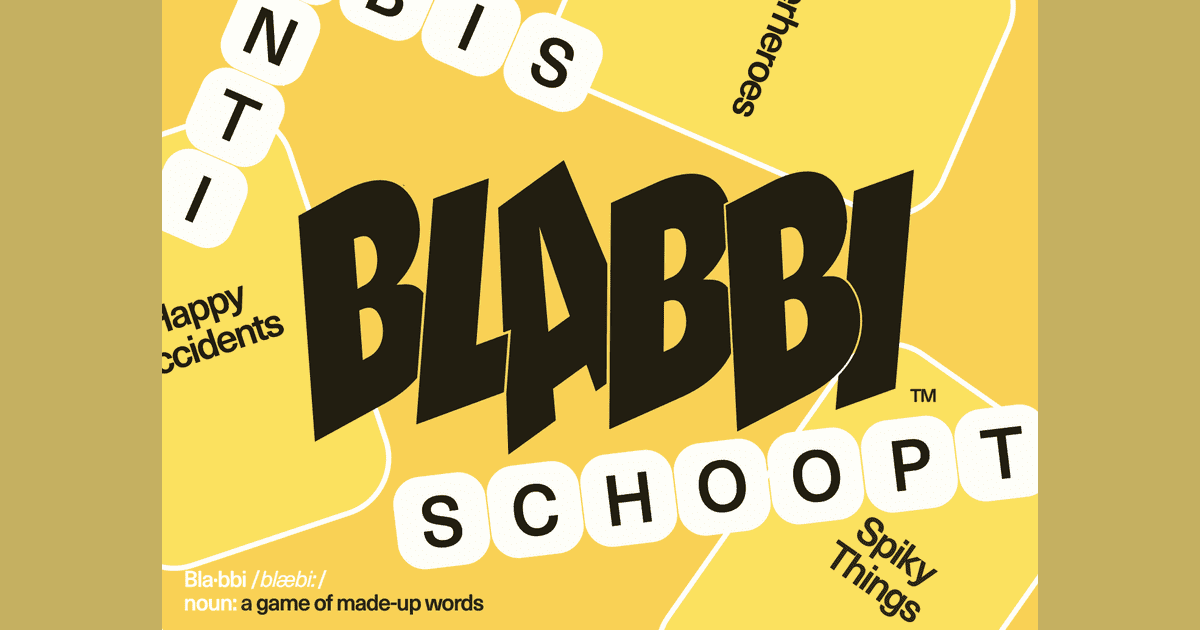SMOOSH JUICE
Designer Diary: Blabbi, a Game of Made-Up Words | BoardGameGeek News

by Adrian Yu
Hey! I’m Adrian Yu, co-founder of the independent game company Blabel and co-designer of Blabbi: A Game of Made-Up Words, which my younger sister Olive Yu and I created as our pandemic project.
As a multidisciplinary artist, film director, and creative director, I never imagined I’d create a board game. I’m a big gamer (mainly video games), but growing up, my parents often warned me that while games are a great outlet, they aren’t a career. I always disagreed but never seriously considered it as a career path.
However, when a paradigm-shifting event like the pandemic occurs, things can change for the better.
Both Olive and I were new to the board game world, and over a period of twelve months, we learned through trial and error what it takes to create a game from scratch: concept, design, branding, marketing, logistics, and everything in between. We bootstrapped the entire project with help from friends along the way.
It hasn’t been smooth sailing the whole journey, but we wanted to share our story to learn from the community and hopefully help others learn from our experiences!
Beginnings
As children of immigrants from Hong Kong, playing games has always been a family tradition, though we often stuck to more casual games due to the language barrier. Olive and I particularly enjoyed Scrabble, but as native English speakers, we had a distinct advantage over our Cantonese-speaking parents.
Our family was also particularly comedic, thanks to our Hong Kong roots and the Cantonese language. Cantonese is a hilarious and incredibly difficult language with its nine intonations. I liken it to singing; you must hit the right note to convey the right word, even if the consonants are the same. This makes Cantonese ripe for double entendres in which words that sound similar have very different literal and figurative meanings. For example, the colloquial word for old person, “Lo Bang”, translates to old cookie or cracker but also connotes being musty and dry.
At home, we often spoke Chinglish, mixing Cantonese intonations with English words. This created our unique family language, and we had a blast with it.
Fast forward to November 2019, the entire family was together for our French family friend’s wedding in the northeastern woods. After the reception, Olive and I were bored and stumbling around the cabin with the last of the wine. We found an old Scrabble set in the basement and decided to play.
One problem: We were too faded to come up with real words. “Scrabble is so lame. Why don’t we just play with made-up words only?” one of us suggested — so we did, using Scrabble pieces to come up with whatever crass and silly words we could muster with the few brain cells we had left. The approach was rudimentary, with only letter tiles and no topic cards or voting, but it ended up being absolutely hilarious.
The next day, we raved about our game to family and friends for about two minutes, then forgot about it. We returned to New York, I resumed my commercial film projects, Olive went back to their studies at NYU, and our game was forgotten.
The Start
In March 2020, Olive and I heard rumors that NYC was going to shut down, so we flew back to our family home in Los Angeles, uncertain about the future. With little to do while quarantining, we returned to our love of playing games. After exhausting the classics, we remembered the made-up word game from the wedding.
Over several months, we refined the game, introducing mechanisms like topic cards and a voting system. Using index cards and Scrabble tiles, we created prototypes. The topic cards added humor and structure, while the voting system made the design more social and engaging. Our parents loved it, and we realized the game’s beauty lay in its language agnosticism. Unlike traditional word games, which disadvantaged ESL players like our parents, this game valued humor and wit.
Encouraged by our successful prototype, we decided to produce a small run for our friends. The first step was naming the game. Initially called “Blabel” (a mix of the Biblical tower of Babel and “blah blah blah”), we found a Kickstarter project with the same name. To avoid competition, we renamed the game to something cuter: Blabbi.
Next, we focused on design. As a graphic designer, I found the process straightforward. I collaborated with designer Eric Hu on the logo and word marks, while I handled packaging design, game pieces, and art direction. We aimed for a design-driven approach: something inviting that would look good on both a coffee table and a shelf. We chose Neue Haas Unica as our primary typeface for its simplicity and slightly softer character than Helvetica.
Creating the game pieces was tricky. We wanted a party game that was truly designed to party: non-slip for table knocks, waterproof for spills, and portable without a board. We experimented with magnetic letter tiles but found them difficult to remove without disrupting the set-up. We settled on silicone tiles for their waterproof coating, surface grip, and pleasing texture, like little erasers.
The cards were simpler. We made them smaller and cuter since they didn’t need much text. Initially, we used coated cardstock, but newer editions are made of PVC. The cards fit into a snug box, and everything was packaged in a blister box for clear compartmentalization.
The design process took about nine months, involving back-and-forth prototyping with manufacturers in China and the U.S. By 2021, we were ready to launch, but given the ongoing global situation, we paused for a year, waiting for a more opportune and ethical time to release our game.
The Launch
By 2022, the world was gradually returning to normalcy, and people were eager to resume real-life experiences. As a creative, I lacked logistics experience, making it challenging to get our products from China to the U.S. After much trial and error, we partnered with Flexport to handle the shipping.
We prepared for a holiday 2022 launch, selling directly to consumers through our custom website and Shopify. We leveraged social media to generate initial interest. To create high-end product photography and editorial/lifestyle imagery, we organized a two-day photoshoot with photographer Tom Keelan and our friends, aiming for a look akin to fashion magazine spreads. Given the shift in 2020, younger people were now embracing in-person gaming, so we wanted our brand to straddle both gaming and culture/fashion.
The launch made a modest impact, selling a few hundred units during the holiday season. Our grassroots approach helped us reach a new audience of casual gamers, but maintaining momentum proved difficult due to our high costs. After a few months, we reduced our product’s MSRP by 40%, sacrificing margins but reviving interest. This move caught the attention of the L.A. Times, leading to a feature story by our writer friend Lina Abascal, which further boosted our visibility.
Getting into Retail
After the article was published, we caught the attention of a buyer at Barnes & Noble. Earlier in 2023, we had sent a sample to a junior buyer at B&N without success. However, following the article, I received an unexpected call from the founder of sales reps Enchanted Moments, informing me that B&N was interested in placing a nationwide order. At first, I was skeptical, but it turned out that someone in B&N’s buying department had seen the article and reached out to Enchanted Moments to negotiate the deal.
We were both thrilled and nervous. Securing a spot in one of America’s largest book and gift retailers was a dream come true, but the retail environment posed new challenges compared to direct-to-consumer sales. Larger chains have strict regulations, so we embarked on another redesign process to meet these compliance requirements. This involved months of co-ordination between our lawyers, manufacturers, and buyers to finalize the new stock.
After nearly six months of trial and error, we succeeded in getting our game into almost every major Barnes & Noble nationwide. However, our next challenge was figuring out how to attract customers to brick-and-mortar stores.
We started employing a grassroots and social media strategy, commissioning various board game and culture influencers to create content that highlights our game and directs attention to Barnes & Noble. Additionally, we discovered that B&N does not host gaming events at the corporate level, so we need to contact each store individually to organize events with their local events managers. This requires significant effort with our limited resources, but we are hopeful that it will be worthwhile.
Epilogue
So there you have it: a brief history of Blabbi. I hope this bit of rambling helps any independent game designer out there learn more about the industry and what it takes to get a game out into the world. We’re eager to learn more from other designers as we continue to ride this wave.
As we enter 2025, we’ve been focusing our efforts on our core strengths: developing the Blabbi world with new content verticals, merchandise, and digital innovation. We’re not career game designers, but creative technologists and visual directors, so putting our heads together on how to innovate in the tabletop gaming space is what keeps us locked in.
Give us a shout at @blabbigames on all social media and find us at Barnes & Noble nationwide if you’re keen to try us out! Just make sure you gather all the goofiest friends you have — this game is best with a whole gathering…

/pic8184160.png)
/pic8222430.png)
/pic8222442.jpg)
/pic8222441.jpg)
/pic8692981.png)
/pic8692980.jpg)
/pic8222458.jpg)
/pic8222457.jpg)
/pic8222459.png)
/pic8692993.jpg)